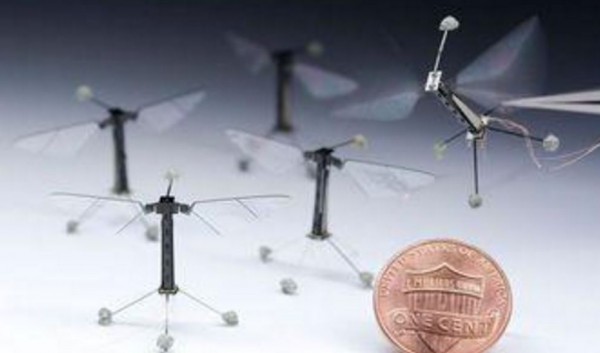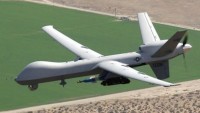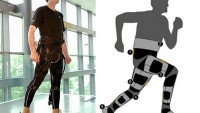RoboBees to be Capable of Autonomous Flight; can aid in Pollination
| Arthur Dominic Villasanta | | Jun 10, 2016 10:34 AM EDT |
(Photo : Kevin Ma and Pakpong Chirarattananon) The Robobee takes its first controlled flight.
"RoboBees" that can now hover on their own like real bees will later be able to fly where they want to; land where they want to and eventually pollinate plants. They can also be used in reconnaissance and can assist in remote communication.
These aerial microrobots have a range of features that will one day soon enable autonomous flight. The goal of the RoboBee project funded by the U.S. government's National Science Foundation (NSF) is to create autonomous robotic insects capable of sustained, independent flight without being tethered to a power source.
Like Us on Facebook
The RoboBee is about the same size as a real bee and weighs only 84 milligrams, which is lighter than a real bee. The first controlled flight of a RoboBee took place in 2012. Last April, the team demonstrated the RoboBee can perch during flight to save energy, as bats, birds and butterflies do.
Today, researchers are working on RoboBees that can sense their environment using lasers.
More important, this flying marvel represents a model of successful interdisciplinary collaboration. Experts from neurobiology, evolutionary biology, materials science, computer science, electrical engineering, mechanical engineering, and bioengineering all worked together towards a common vision, with results that would be difficult to achieve with a smaller group.
The project is being implemented by a research team from Harvard University and Northeastern University. The team was inspired by nature, more specifically the incredible ability of small insects to self-launch, navigate and perform agile actions despite their small bodies.
"Bees and other social insects provide a fascinating model for engineered systems that can maneuver in unstructured environments, sense their surroundings, communicate and perform complex tasks as a collective full of relatively simple individuals," said Robert Wood, professor of Engineering and Applied Sciences at Harvard University and principal investigator of the RoboBee project.
"The RoboBees project grew out of this inspiration and has developed solutions to numerous fundamental challenges -- challenges that are motivated by the small scale of the individual and large scale of the collective."
Wood estimates it will take another five to 10 years before the RoboBee might be ready for use in the real world.
In developing the RoboBee, the team advanced basic research in a number of areas where they saw obstacles to realizing their vision: from micro-manufacturing methods and materials for actuation, to small-scale energy storage and algorithms to effectively control individuals and coordinated swarms of robots.
The group's research led to breakthroughs in each of these areas.
Highlights include new methods for manufacturing millimeter-scale devices based on lamination and folding; new sensors applicable to low-power and mobile computing applications; architectures for ultra-low power computing; and coordination.
©2015 Chinatopix All rights reserved. Do not reproduce without permission
EDITOR'S PICKS
-

Did the Trump administration just announce plans for a trade war with ‘hostile’ China and Russia?
-

US Senate passes Taiwan travel bill slammed by China
-

As Yan Sihong’s family grieves, here are other Chinese students who went missing abroad. Some have never been found
-

Beijing blasts Western critics who ‘smear China’ with the term sharp power
-

China Envoy Seeks to Defuse Tensions With U.S. as a Trade War Brews
-

Singapore's Deputy PM Provides Bitcoin Vote of Confidence Amid China's Blanket Bans
-

China warns investors over risks in overseas virtual currency trading
-

Chinese government most trustworthy: survey
-

Kashima Antlers On Course For Back-To-Back Titles
MOST POPULAR
LATEST NEWS
Zhou Yongkang: China's Former Security Chief Sentenced to Life in Prison

China's former Chief of the Ministry of Public Security, Zhou Yongkang, has been given a life sentence after he was found guilty of abusing his office, bribery and deliberately ... Full Article
TRENDING STORY

China Pork Prices Expected to Stabilize As The Supplies Recover

Elephone P9000 Smartphone is now on Sale on Amazon India

There's a Big Chance Cliffhangers Won't Still Be Resolved When Grey's Anatomy Season 13 Returns

Supreme Court Ruled on Samsung vs Apple Dispute for Patent Infringement

Microsoft Surface Pro 5 Rumors and Release Date: What is the Latest?













